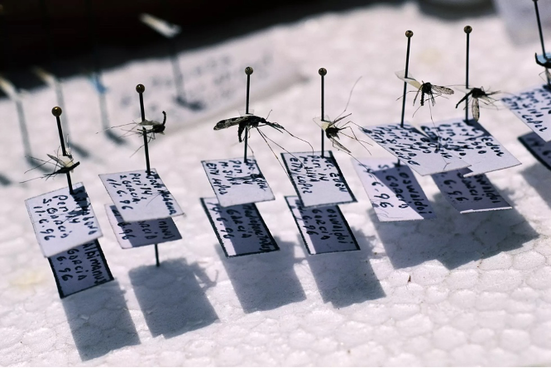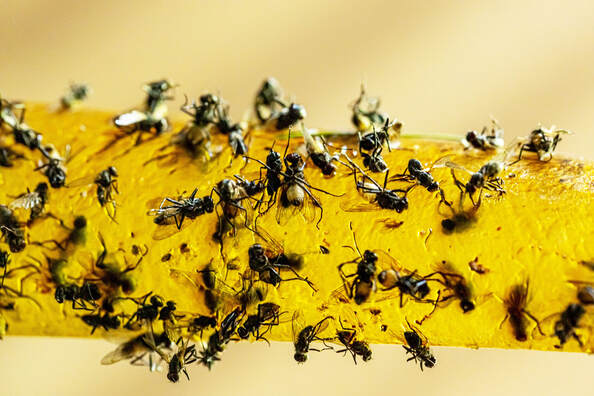|
Last month on the Bug Lessons blog, we introduced the concept of integrated pest management (IPM)—a science-based strategy used to control pests in all sorts of environments. This month in our IPM series, we’re taking a closer look at the components of a successful IPM plan. Read on to learn more about the most important steps you can take to control pests in a responsible yet effective way no matter where you are! Important Components to an IPM PlanPest Identification: Prior to engaging in any sort of pest management strategy, it is crucial that the pest in question is properly identified. If you cannot identify the organism causing problems, employ a local extension agent or specialist for assistance. This is arguably the most important step in any IPM program. Treating for the wrong pest can lead to program failure because IPM hinges on understanding pest biology and behavior. Setting Guidelines to Determine When to Use What Action: Before action is taken, an idea of how much damage or how many pests can be tolerated should be established. This prevents unnecessary labor and pesticide application. For instance, even one rodent in a commercial kitchen is probably unacceptable whereas a homeowner might be willing to deal with one or more rodents in and around their home. Again, the threshold for action should be established prior to engaging in pest control  Getting the correct insect identification is crucial for effective pest management. Diagnostic entomologists and taxonomists specialize in the identification and classification of insects. If you need assistance identifying a specimen, contact a local extension entomologist. (Image Credit: Chris Martin, Image Source: Getty Images) Monitoring and Assessing Pest Numbers and/or Damage: Monitoring for pests is the only way to assess whether or not the established damage/pest threshold has been reached. Monitoring allows for the qualitative assessment of what pests are present and the damage they are causing. This step will also help you decide what management methods to employ, as many management strategies are based on pest density (e.g., how much bait to apply for a cockroach infestation). The specific tools used for monitoring are pest-dependent, but devices such as sticky traps are often used. Record-keeping is an important part of monitoring so that you can understand when pests are most active and, thus, the most critical time for action. Preventing Future Pest Problems: Many pest problems are more effectively solved with preventative versus reactive strategies. Sanitation, pest-proofing, reducing hospitable pest environments, etc. should be considered so that the problem does not return. Prevention should really be the first tool in pest management, because it is usually environmentally-friendly, low cost, and effective. Using All Control Tactics Available and Reasonable: Ideally, a successful IPM program will utilize a combination of control strategies that synergize one another (i.e., they work better together than separately). It is a common misconception that chemical (pesticide) use is not permitted in an IPM program. Pesticides can absolutely be used in an IPM program, but alternatives should be considered in addition. When pesticides are used, they should be used with consideration for the environment. Some strategies outside of chemical pest control include:
Assessing and Adapting the IPM Program: Once action has been taken and all control strategies have been given ample time to work—progress should be evaluated. Were the established thresholds and guidelines from step two met? Are pests still causing excessive damage? If the IPM plan has failed, troubleshooting and additional control measures should be employed. ConclusionsIntegrated pest management is a great way to control pests while being conscious about environmental impact and preserving the efficacy of chemical pesticides. It is important to remember that your first IPM plan may not go…to plan! These steps can be rearranged as necessary depending on where you are in the pest control process. Steps may also be done in tandem (e.g., preventing pest entry while monitoring pest activity). This roadmap is just a guide. If you need more help designing an IPM plan, feel free to contact us at Bug Lessons, or, contact your local extension specialist.
0 Comments
Your comment will be posted after it is approved.
Leave a Reply. |
Bug Lessons BlogWelcome science communicators and bug nerds!
Interested in being a guest blogger?
Archives
November 2023
Categories
All
|
